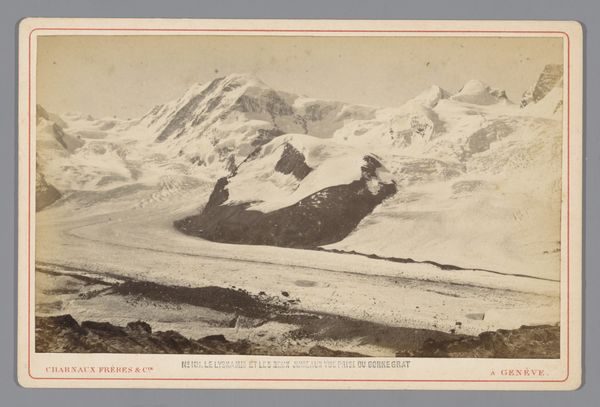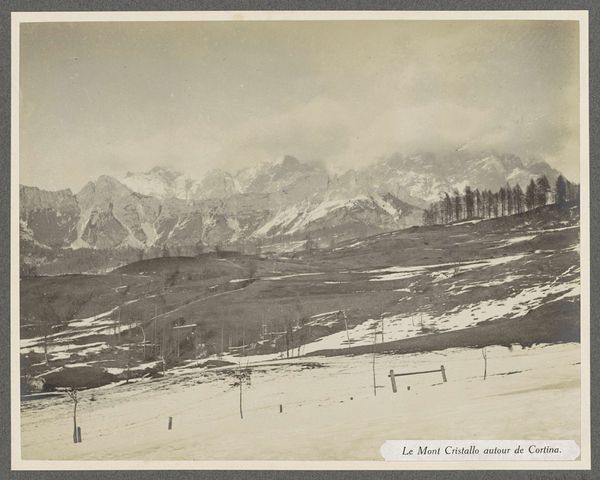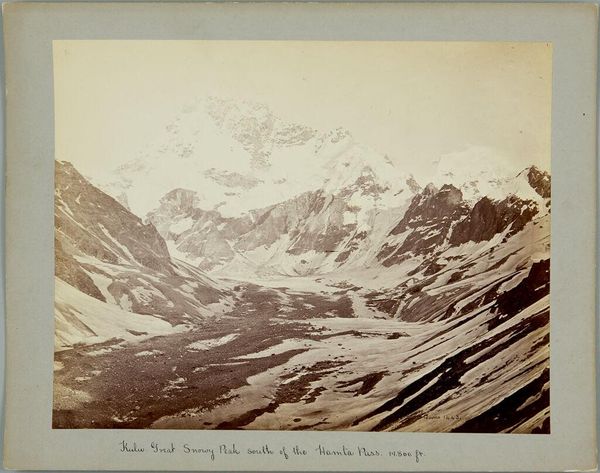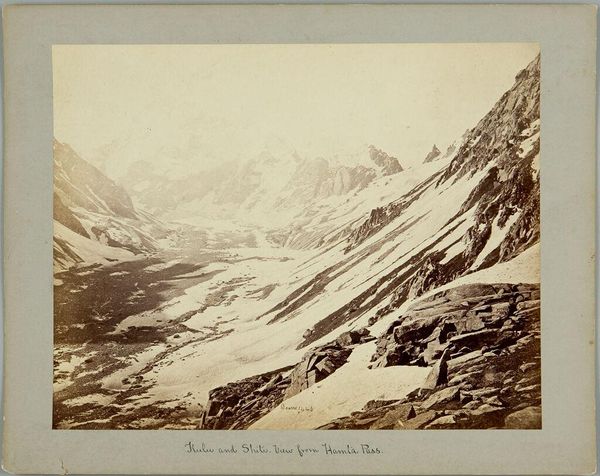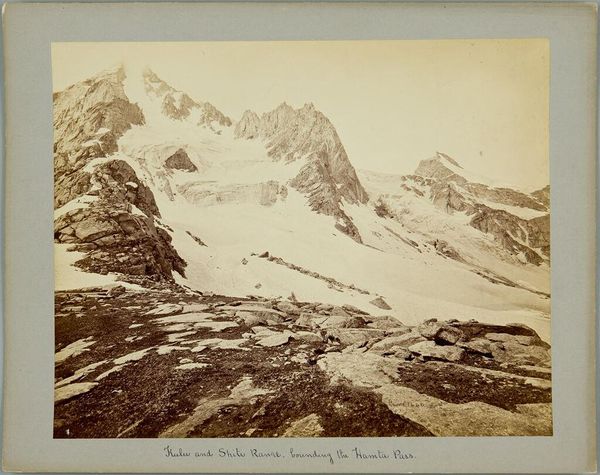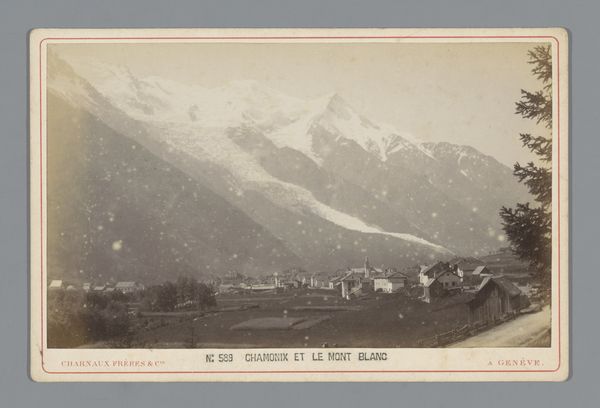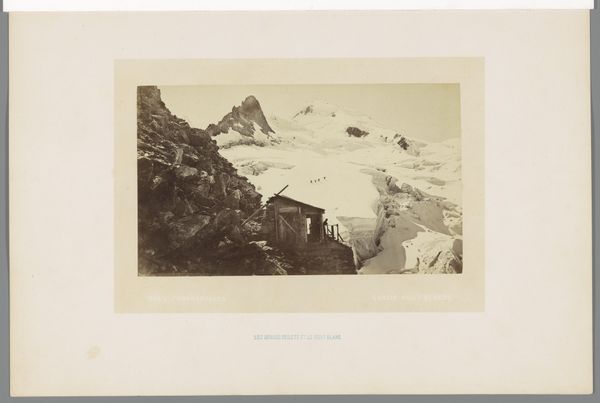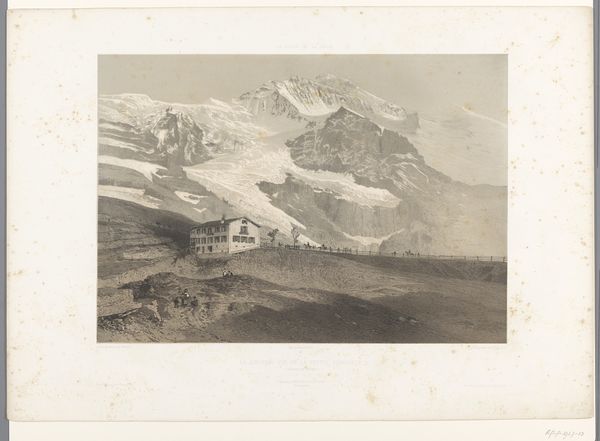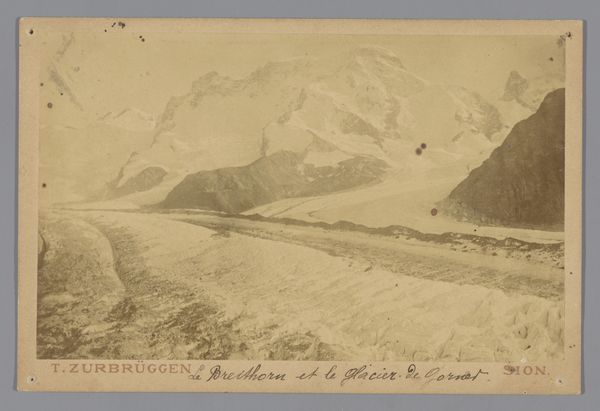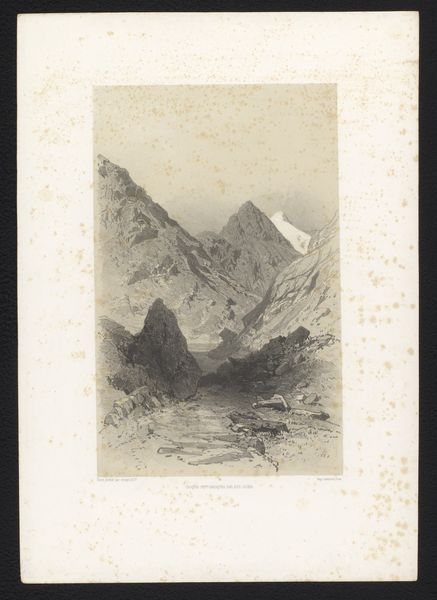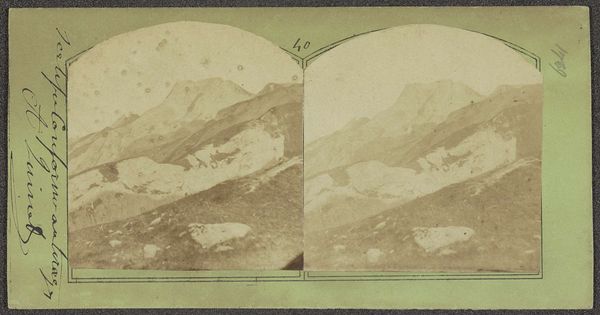
Dimensions: height 100 mm, width 155 mm
Copyright: Rijks Museum: Open Domain
Curator: This captivating image offers us a view of the Monte Rosa in Switzerland, dating from somewhere between 1880 and 1920. Garcin is credited with capturing this scene using the gelatin-silver print process. Editor: It strikes me as stark and monumental. The contrast between the snow and the rock formations creates a powerful sense of scale, really emphasizing the geological forces at play. There is such a raw quality. Curator: Indeed. Consider the Romantic movement's influence on landscape depictions during this time. This isn't just a document; it’s about sublimity, the emotional impact of confronting nature’s grandeur. Early mountaineering as a sport was also rising at this point, so ideas of conquering, even celebrating nature could have affected this. Editor: That connection to Romanticism is clear. I see that manifested in the materials. Gelatin-silver prints, the processes of layering, exposure, and chemical development would offer a reproducibility and aesthetic quite different than a hand drawn landscape. Were images such as these largely consumed as inexpensive, printed keepsakes from trips to visit the mountain? Curator: That's a really perceptive consideration of materiality. Yes, exactly. Mass production allowed wider access. Before then such scenes were largely for the upper classes. The photo’s affordability shifted landscape ownership from wealthy landowners to tourists, who could bring back and share their memories. What did this do to established norms? Editor: Interesting thought about that. It definitely highlights the intersection of material culture and social change, this idea of landscape accessibility shifts understandings of class, taste, and experience in ways that are difficult to underestimate. I keep thinking of its reproducibility, almost as a prototype of postcards, these mass tourism products for a much broader audience than previously experienced. Curator: And thinking about intersectionality, how might increased access to photography like this have shifted cultural norms and notions of the ideal Western landscape for women or marginalized ethnic communities for instance? The accessibility did not inherently create access to everyone, and could easily reinforce societal expectations and privilege. Editor: A fascinating photograph, reminding us of the interplay between representation, material reality, and the narratives we construct around landscapes and access. Curator: Precisely, a potent visual record entwined with layered societal influences.
Comments
No comments
Be the first to comment and join the conversation on the ultimate creative platform.
